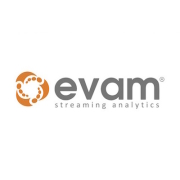Streaming Analytics is crucial for processing real-time data to enhance decision-making and operational efficiency. It empowers businesses to derive actionable insights from continuous data streams.
As organizations handle increasing volumes of data, Streaming Analytics solutions provide the tools to analyze and act on data in motion immediately. These solutions are designed to integrate with diverse data sources, applying algorithms and rules that allow for instant insights and responses. They serve industries needing rapid data-driven decisions, such as finance, healthcare, IoT, and telecom.
What are the critical features of Streaming Analytics solutions?Industries like finance and telecommunications implement Streaming Analytics to monitor transactions and network traffic in real-time, ensuring security and efficiency. The healthcare sector uses it for patient data monitoring, enabling timely interventions. In IoT, it supports device management and analytics.
Streaming Analytics is beneficial for organizations aiming for agility and responsiveness in decision-making. It enables real-time insights and actions, enhancing operational efficiency and customer experiences.












































Streaming analytics gives companies the ability to analyze data as soon as it becomes available. With immediate real-time data at their fingertips, businesses can identify new revenue streams, resulting in an increase in profits. Other advantages include new customers, improved customer service, and also a way to analyze risks before they even occur. Because data is processed before it even lands in a database, streaming analytics supports much faster decision-making than using traditional data analytics technologies. Streaming analytics also guarantees security protection by detecting threat patterns and their risks, since it provides security monitoring of network and physical assets. By using real-time analytics, organizations can both predict and detect significant business events the moment they occur, making it possible to minimize risk while simultaneously maximizing gains.
As big and fast data proliferates and more data streams are generated, companies are relying on real-time analytics more and more. Real-time data monitors any number of event streams and event data of any kind, allowing for a quick response to events at the very moment they happen - or even sooner when using predictive models.
For companies, real-time analytics can help businesses comprehend what’s happening across their business units, improve the relationship between sales and marketing, enhance workflows, understand customer behavior, and much more. Real-time data can be used for nearly every type of business and industry ranging from financial services, healthcare, information technology, advertising, and transportation.
Streaming Analytics provides real-time processing of data as it is produced, enabling immediate insights and faster decision-making. It enhances data accuracy by minimizing the delay in data processing. Optimizes resource utilization by prioritizing significant data flows. Facilitates improved operational efficiency through timely detection and response to patterns and anomalies. It is crucial for time-sensitive applications, such as fraud detection, financial services, and IoT. Supports scalable architectures, allowing for seamless handling of growing data volumes. Streaming Analytics integrates easily with existing systems, enhancing data-driven strategies. Its ability to deliver actionable insights quickly is vital for maintaining a competitive edge.
Streaming Analytics allow you to process data in motion, providing insights as events occur. This capability empowers you to make timely decisions, react to market trends, or detect anomalies instantly. With continuous data flow analysis, you can gain a competitive edge by responding to changes more rapidly than traditional batch processing methods.
What are the key components of a Streaming Analytics solution?A robust Streaming Analytics solution consists of several crucial components: data ingestion systems that capture real-time data from various sources, a processing engine that analyzes incoming data streams, and a visualization interface to present the insights. These components work together seamlessly to provide comprehensive real-time analytics capabilities.
Why is scalability important in Streaming Analytics?Scalability ensures that your Streaming Analytics system can handle increasing data volumes without compromising performance. As your business grows or as data sources expand, a scalable solution will continue to provide accurate and timely insights. It enables you to maintain system efficiency while accommodating peak loads and evolving data processing needs.
How do Streaming Analytics solutions handle data security?Data security in Streaming Analytics is crucial, as sensitive information often flows through these systems. Solutions typically integrate encryption protocols, access controls, and data masking to protect data integrity and confidentiality. By prioritizing security, you ensure that your streaming data remains safe from unauthorized access or breaches.
What are the challenges in implementing Streaming Analytics?Implementing Streaming Analytics can pose several challenges, including the complexity of integrating with existing systems, latency issues, and managing data quality. To overcome these, you need a well-thought-out strategy that includes choosing the right technology stack, designing scalable architectures, and ensuring synchronization with legacy systems. Addressing these challenges enables you to harness the full potential of Streaming Analytics.